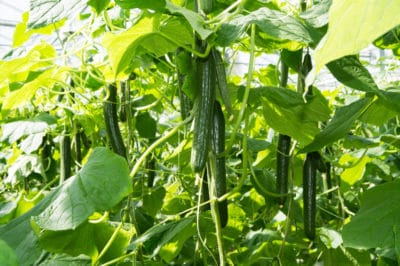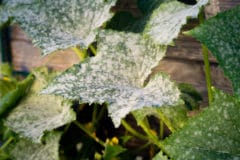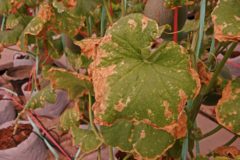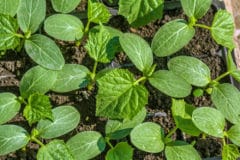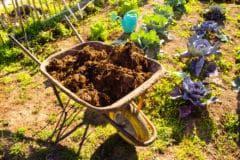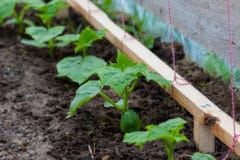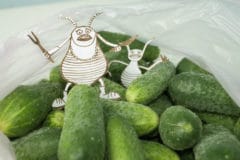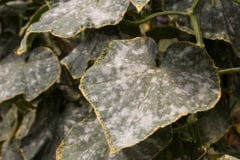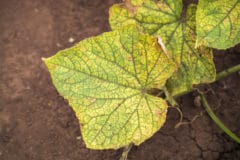Watering
Cucumbers need at least 1 inch of water per week. In dry spells, 2 inches is better. That equals between 6 and 12 gallons (22.7 to 45.4 liters) per 10 square feet of soil. Water your cukes from beneath early in the day, so that whatever water hits the leaves evaporates as quickly as possible.
Fertilizing
Cucumbers love eating as much as they love drinking. Keep them happy by amending your soil with organic compost one month before planting your seeds. Spread a 2-inch layer over the soil and work it in with a tiller. After the vines develop runners, feeding a monthly dose of organic fertilizer. Organic fish emulsion is a good choice.
Mulching
After the soil has warmed to 70°F (21.1°C) in spring, mulch your cuke bed with 2 to 4 inches of shredded leaves or another organic mulch. It will nourish the soil block weeds and conserve moisture.
Pest Control
The biggest pest problem cucumbers face is the striped, spotted or banded cucumber beetle. Besides devouring the flowers and leaves, these nasty pests spread lethal bacterial cucumber wilt. Control methods include:
- Protecting your cukes with fabric row covers spread over the soil at planting. They let air, sun and moisture in while keeping the beetles out.
- Removing the beetles with a hand-held vacuum early in the morning, freezing them overnight and discarding them in a sealed plastic bag,
- Planting wilt-resistant cukes such as ‘County Fair’ or ‘Saladin.’
Mildew Management
Cuke stems and leaves covered with a talc-like substance are infected with powdery mildew. If they have yellow spots that spread to form dry, brown patches, the culprit is downy mildew. Both diseases love humid, warm weather.
Expert gardener’s tips:
- The easiest way to combat these diseases is with mildew-resistant cukes. Slicing varieties include ‘Salad Bush F1,’ ‘Spacemaster,’ and ‘Straight 8.’ For pickling , go with ‘Burpless II,’ ‘Diamant,’ or ‘Maxi Pack.’
- Organic mildew prevention also includes giving your cukes at least five hours of daily sun, spacing them 3 to 5 feet apart and trellising, which helps keep the leaves dry when you water.
The Baking Soda Solution
For economical, environmentally friendly powdery mildew control, mix 4 teaspoons (23.7 ml) of baking soda and several drops of a non-detergent liquid soap in 1 gallon (3.78 liters) of water. Spray the infected vines until the solution drips from the fronts and backs of the leaves and repeat as needed until the infection subsides.
